- Home
- Alison Weir
Lancaster and York: The Wars of the Roses Page 6
Lancaster and York: The Wars of the Roses Read online
Page 6
The King’s childlessness was a matter of concern to most of his subjects, for Queen Isabella would be unable to produce children for several years. Richard’s heir was Roger Mortimer, 4th Earl of March, grandson of Lionel of Antwerp, Edward III’s second son. In 1398 Roger was twenty-four; like his father, he served the Crown as Lord Lieutenant of Ireland, though he could not bring the wild Irish tribal factions under control. In June that year, March made an attempt to impose his authority on the lands to which he held title in Ireland, but was ambushed and killed by the Irish at Kenlis in Leinster. He left a son, Edmund, aged only seven – heir not only to his father’s earldoms, but also to the throne itself.
Richard II and Gaunt were now virtually estranged. Saddened by the exile of his son, Gaunt fell ill. He died in 1399 at Leicester Castle and was buried beside Blanche of Lancaster in St Paul’s Cathedral.*2 Gaunt had loved Katherine Swynford to the end, referring to her in his will as ‘my very dear companion’. She survived him by four years and was buried in Lincoln Cathedral.
Gaunt’s death was fatal to Richard. Despite their differences, Gaunt had been a loyal supporter of the monarchy, and now that he was gone there was nothing to prevent a confrontation between the King and Bolingbroke.
Tidings of his father’s passing reached Bolingbroke in Paris. Although the King’s sentence of exile prevented him from returning to England for another nine years, he was comforted by the knowledge that he was now Duke of Lancaster, premier peer of the realm and enormously wealthy, for the Lancastrian inheritance was by far the richest in England. Prior to his leaving England, the King had assured him that his possessions were safe and had issued letters patent to that effect.
But then came shattering news: Richard had revoked the letters patent and sequestered all Bolingbroke’s lands, distributing them among his own supporters. Worse than that, Bolingbroke’s exile was to be for life. This act of betrayal made Bolingbroke decide to return to England and to deal with the problem of Richard once and for all.
In May 1399 Richard II sailed to Ireland in what was to prove an unsuccessful attempt to defuse the ugly situation that had developed there after March’s death. Prior to his departure he had March’s young son proclaimed heir presumptive, and appointed York regent during his absence. Rutland went with the King to Ireland. Richard was not to know it, but his absence from England would prove crucial.
Bolingbroke landed in Yorkshire around 4 July at Ravenspur, a port that has long since disappeared due to coastal erosion. On disembarking, the Duke knelt down and kissed the soil of his native land. He had come in rebellion against his lawfully crowned and anointed sovereign, although he initially claimed that it was only to safeguard his Lancastrian inheritance and reform the government. Indeed, he acknowledged Richard’s title as king and the right of the Earl of March to succeed him.
At the time of the invasion there was a huge tide of popular feeling against Richard, especially in London, where Bolingbroke was well liked, and York was not the man to rally the few supporters Richard had left. Bolingbroke’s arrival placed York in a dilemma, for he had to choose between loyalty to his royal nephew and loyalty to the son of his best-loved brother, Gaunt. Typically, he remained undecided for three weeks.
As he progressed south Bolingbroke was gratified to find so many people ready to support him. Nobles and commons flocked to his banner and he quickly collected a large army, meeting little resistance anywhere. The princes of the Church offered their support and the Archbishop of Canterbury assured all who joined Bolingbroke of the remission of their sins and ‘a sure place in Paradise’. In Bristol, the Duke found some of Richard’s most hated advisers and summarily ordered their heads cut off, which greatly pleased the citizens.
Bad weather meant that news of Bolingbroke’s invasion took some time to reach the King in Ireland, and as soon as he knew the worst, Richard sailed home, determined to raise an army and meet his cousin in the field. Late in July he landed in South Wales, but was unable to rouse much support; indeed many of his followers were deserting him, including Rutland, who dismissed the King’s remaining soldiers and rode off to join Bolingbroke, whom York had now finally decided to support. Abandoned and panic-stricken, Richard disguised himself as a friar and fled to Conway Castle, where he surrendered to a deputation sent by Bolingbroke. At Lichfield, on the way to London, he tried to escape by climbing out of a tower window, but was caught leaving the garden below. After that he was never alone, being guarded by ten or twelve armed men.
On 2 September Bolingbroke entered London to a tumultuous reception. King Richard, a prisoner in his train, was greeted with jeers and pelted from the rooftops with rubbish, and later that day he was confined in the Tower of London. There was no doubt in anyone’s mind as to who was now ruling England. Nevertheless, Henry had sworn at Conway that Richard should ‘keep his royal power and dominion’.
Throughout September the King made repeated demands to be publicly heard in Parliament. Even the pro-Lancastrian chronicler, Adam of Usk, who saw him in prison at this time, felt compassion and noted ‘the trouble of his mind, hearing him talk on the fate of kings in England’. Doubtless he was haunted by the fate of Edward II, murdered after his deposition in 1327.
Meanwhile, Bolingbroke, forgetting his promise, had appointed a commission to consider who should be king. Many of the magnates were unhappy at the prospect of his taking the throne; several committees of lords, having examined his claim to rule by right of descent, declared it flawed. Yet Adam of Usk says that the magnates found reasons enough for setting Richard aside: ‘perjuries, sacrileges, unnatural crimes, exactions from his subjects, reduction of his people to slavery, cowardice and weakness of rule’. Henry, it seemed, was the only realistic alternative, for the legitimate heir, March, was just a child. Usk claimed that Richard was ‘ready to yield up the crown’, but this was a Lancastrian fiction. Ready or not, ‘for better security it was determined that he should be deposed by the authority of clergy and people, for which purpose they were summoned hastily, in the King’s name, on Michaelmas Day’.
In fact, Richard was by no means willing to give up the throne, and Bolingbroke knew it. His first impulse was to make Richard stand trial by his peers in the high court of Parliament, but there was no precedent for this and, such was the mystique of kingship, it might not produce the desired result. He therefore used every means in his power to force Richard to abdicate, for he was anxious that the removal of his cousin from the throne and his own subsequent accession should have some basis in law. Knowing that his own title was precarious, the official line was to be that Richard’s misgovernment justified his deposition. The laws of succession were best left out of it.
Although Richard at first had had no intention of abdicating, he soon realised he had little choice. For a month, systematic coercion and threats were used to persuade him to co-operate, and at the end of that time, a shattered and broken man, he gave in. According to one of his supporters, a Franciscan friar called Richard Frisby, he agreed to abdicate ‘under compulsion, while in prison, which is not a valid abdication. He would never have resigned had he been at liberty.’
On the morning of 29 September 1399, some of the lords assembled for Parliament, accompanied by a committee of lawyers, waited upon Richard in the Tower. They returned in the afternoon, when the King, with a smiling face, signed an instrument of abdication, in which he requested that he be succeeded by his cousin of Bolingbroke. As a token of goodwill he sent Henry his signet ring.
The next morning, Parliament assembled in Westminster Hall. Richard had asked that he should not come before it ‘in horrible fashion’ as a prisoner, which was agreed to. When he entered the hall, he stood before the empty throne, removed his crown and, placing it on the ground, ‘resigned his right to God’. He then made a short speech expressing his hope that Bolingbroke would be a good lord to him and ensure that he was comfortably provided for. Although thirty-three accusations against him were read aloud, he was not allowed to say an
ything more, even in his defence.
In the official record of the proceedings, written in the Parliament Roll, Richard is described as looking cheerful as he read out the transcript of his instrument of abdication, but this is at odds with the evidence of Adam of Usk and the chronicler monk of Evesham, who describe his demeanour as anything but happy. Later that day the Bishop of Carlisle protested that Richard should have had a chance to answer the charges against him, but his was a lone voice.
Yet even though it had been summoned in the King’s name, this ‘Parliament’ was not a strictly legal or normal assembly. There was no Speaker, and a crowd of hostile Londoners had been admitted, probably to intimidate the former king.
After Richard had been taken back to the Tower, the assembled lords declared him deposed. His removal from the throne was the catalyst for the dynastic and political instability that characterised the century that followed it. Shortly after, Bolingbroke entered Westminster Hall, preceded by his four sons and the archbishops of Canterbury and York. In the hushed throng Sir Thomas Percy’s voice rang out, ‘Long live Henry of Lancaster, King of England!’ This was the cue for the whole assembly to respond with the words, ‘Yes! Yes! We want Henry to be king, nobody else!’
Bolingbroke acknowledged their acclaim, then placed himself in Gaunt’s former seat, occupying it as Duke of Lancaster. But the two archbishops took him by the hand and led him to the empty throne. Silence fell as he rose to speak, saying, ‘In the name of the Father, Son and Holy Ghost, I, Henry of Lancaster, challenge this realm of England and the crown, as I that am descended by right line of the blood coming from the good lord Henry the Third, and through him that right that God of His grace hath sent me with help of my kin and of my friends to recover it, the which was in point to be undone for default of governance and undoing of the good laws.’
After he had finished speaking, he showed the assembly Richard’s signet ring, as proof that the former king had designated him his successor. There was rapturous applause, and both lords and commons enthusiastically acknowledged him as king of England and of France. At the close of proceedings, proclamation was made that Richard had abdicated and that Bolingbroke had succeeded him as King Henry IV. Some voices were publicly raised in protest. They were to be the first of many.
3
The Usurping Dynasty
Certainly Henry IV and the Lancastrian kings who succeeded him were usurpers. Henry had achieved the royal dignity by deposing England’s lawful sovereign, and the legitimacy of his title to the throne would remain a sensitive issue. The basis of his claim to rule by right of blood was an ingenious lie which, says Adam of Usk, had already been rejected by a committee of lords and clergy. Henry had asserted that Edmund Crouchback, 1st Earl of Lancaster, from whom he was descended through his mother, Blanche of Lancaster, had in fact been the eldest son of Henry III, not the second son, and had been overlooked because of bodily deformity in favour of his ‘younger’ brother, Edward I, an ancestor of his own father, John of Gaunt. This claim had serious implications because, if accepted, all the kings since Edward I’s time must be deemed usurpers. It also ensured that the children of Gaunt’s later wives, especially the Beauforts, were excluded from the succession, and made Henry’s claim through his mother far superior to that which he inherited from his father.
Even though the committee had rejected this preposterous claim, Henry clung to it, preferring to stress his descent through his mother rather than basing his title solely on his descent from Edward III through John of Gaunt, which of necessity involved overlooking the prior claim of the Mortimers. This falsified descent was fraught with contradictions, since, to counteract any legitimist sympathisers, he also took his stand on the Salic Law, which prevented claims to the throne by or through a female. In France the Salic Law did apply to the royal succession, and it was because of it that the French had denied Edward III’s claim through his mother to the throne of France. The English, Henry among them, had repeatedly disputed the existence of the Salic Law, even in France, though he now used it to nullify the claim of the legitimate heir to England.
Henry’s blatant attempts to justify his succession by massaging the facts about the royal descent deceived no one. Although it was vital to present himself as a lawful king, his title was really derived from his already being de facto king of England. His birth, wealth, abilities, and the fact that he had four strapping sons all convinced his subjects that he had been the only viable candidate for the empty throne. He was also the only man capable of restoring law and order and firm government to the country. Henry also claimed to rule by divine appointment: God, by granting him the victory, had thereby called him to the throne. He certainly did not believe he held his crown by right of parliamentary election; Parliament had merely recognised him as king. He and his successors of the House of Lancaster were similarly acknowledged by every great institution of Church and State, were hallowed and anointed at their coronations and acclaimed by the magnates, who swore fealty to them. Nevertheless, Henry had set a dangerous precedent. Although he had no right to it, he had taken the throne by force. In time, others, with a better or worse right, might do the same. It remained to be seen whether Henry IV could successfully hold on to the throne which he had taken.
During all these proceedings, no one had thought to support the superior claim of the legitimate heir-general, the seven-year-old Earl of March. Henry was a renowned and popular figure, a man of authority and power, whereas March was an unknown and untried child. Indeed, Archbishop Arundel took it upon himself to preach a sermon justifying the setting aside of the boy. England, said the Archbishop, would from now on be ruled by men, not boys. As a result of the decision to overlook March, the claim of the rightful heirs to the throne would remain dormant for sixty years after Henry IV’s accession, although its existence remained an ever-present threat to the House of Lancaster because it provided a focus for rebels and malcontents. Henry IV himself regarded young March as a dangerous rival, and with good reason, as we shall shortly see.
On 13 October, Henry was crowned in Westminster Abbey with oil said to have been given by the Virgin Mary to St Thomas à Becket for the sanctifying of a king who would regain the realm lost by his ancestors. Unfortunately, as the sacred moment of the anointing arrived, the Archbishop discovered that the King’s head was alive with lice; and at the offertory, Henry dropped his gold coin, which rolled away and could not be found. The superstitious took these to be evil omens.
Henry marked his coronation by instituting a new order of chivalry, the Order of the Bath, and his four sons were its first members. Two days after the coronation, the King’s eldest son, Henry of Monmouth, aged twelve, was proclaimed heir apparent to the throne and created Prince of Wales, Duke of Cornwall and Earl of Chester, titles borne by the Black Prince and conferred ever since then on the eldest son of the reigning monarch.
After the coronation, York, now in poor health, retired to his beloved manor at Langley. Henry appointed him Master of the Royal Mews and Falcons, giving him the opportunity during his retirement to indulge his passion for falconry. The Yorkist badge of the ‘falcon and fetterlock’ is thought to have its origins in this appointment. York died in 1402, and was succeeded as 2nd Duke by his son, Rutland.
Rutland had suffered for his support of Henry IV. Twenty courtiers whose sympathies lay with the deposed Richard had thrown their hoods at his feet in challenge. Treated with contempt and hatred, Rutland was subject to verbal abuse or angry silences when he showed his face at court. Nevertheless, he now enjoyed the King’s favour, and Henry protected him from his enemies, although he kept a watchful eye on one who had been so close to Richard II.
Henry IV soon discovered that it was less easy to hold on to the crown than to usurp it. He had promised to provide good and just government but, because of his dubious title to the throne, the first decade of his reign was troubled by conspiracies to overthrow him. He dared not emulate Richard II’s reliance on the advice of favourites, and
took steps to ensure that he was seen to be ruling with the advice and support of Parliament. In order to woo Parliament, Henry sanctioned laws giving it unprecedented powers, and established the custom of free debate and the immunity of members from arrest, leaving them free to criticise the King as they pleased.
Henry had the delicate task of restoring prestige to a throne he had weakened by usurping it and at the same time retaining the loyalty of those who had supported him. Yet the charisma which had attracted them to his cause and the heady burst of popularity that greeted his accession were not so much in evidence after it, especially when people realised that the evils of Richard’s misgovernment could not be put right overnight. Henry was an industrious man of business and could be ruthless when it came to dealing with rebels, but a permanent shortage of money, exacerbated by the cost of putting down rebellions, and the distrust of some magnates, were problems he could not surmount, and consequently his reign was a time of continual tension. He did secure the support of the Church, having authorised the passing of the statute De Heretico Comburendo, which condemned heretics to be burned to death. This was aimed chiefly at the Lollards, whom Henry believed were a threat to his throne, not so much because of their religious beliefs, but because many supported Richard II.
Although Henry IV brought the vast wealth of the duchy of Lancaster to the Crown, as well as much of the wealth of the de Bohuns, it proved insufficient. He had therefore to make a virtue of the necessity to consult Parliament because he needed to obtain grants of money. It could truly be said that the bankruptcy of the Lancastrian kings did more to undermine the stability of the monarchy than their usurpation of the throne.

 Richard III and the Princes in the Tower
Richard III and the Princes in the Tower Britain's Royal Families: The Complete Genealogy
Britain's Royal Families: The Complete Genealogy The Lady in the Tower: The Fall of Anne Boleyn
The Lady in the Tower: The Fall of Anne Boleyn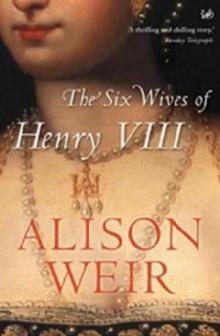 Six Wives of Henry VIII
Six Wives of Henry VIII Elizabeth of York: A Tudor Queen and Her World
Elizabeth of York: A Tudor Queen and Her World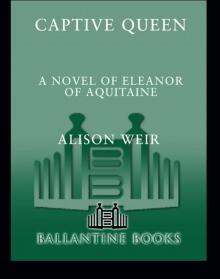 Captive Queen
Captive Queen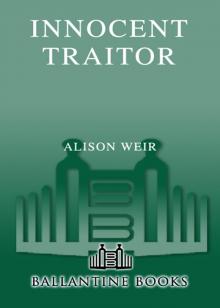 Innocent Traitor
Innocent Traitor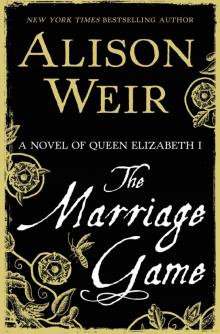 The Marriage Game
The Marriage Game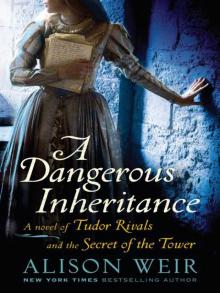 A Dangerous Inheritance
A Dangerous Inheritance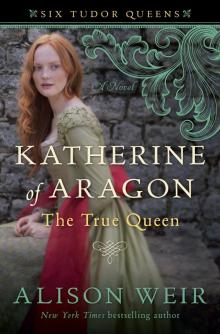 Katherine of Aragón: The True Queen
Katherine of Aragón: The True Queen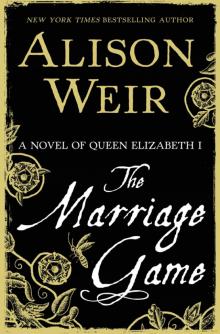 The Marriage Game: A Novel of Queen Elizabeth I
The Marriage Game: A Novel of Queen Elizabeth I Princes in the Tower
Princes in the Tower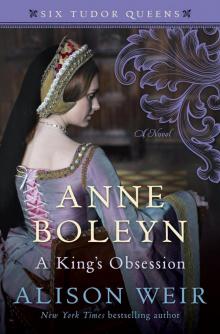 Anne Boleyn: A King's Obsession
Anne Boleyn: A King's Obsession Traitors of the Tower
Traitors of the Tower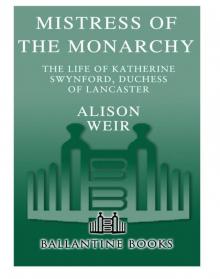 Mistress of the Monarchy: The Life of Katherine Swynford, Duchess of Lancaster
Mistress of the Monarchy: The Life of Katherine Swynford, Duchess of Lancaster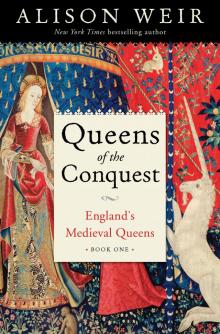 Queens of the Conquest: England’s Medieval Queens
Queens of the Conquest: England’s Medieval Queens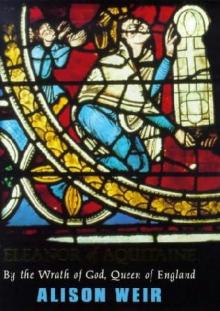 Eleanor of Aquitaine: A Life
Eleanor of Aquitaine: A Life Mary, Queen of Scots, and the Murder of Lord Darnley
Mary, Queen of Scots, and the Murder of Lord Darnley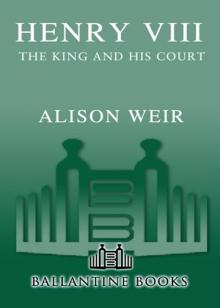 Henry VIII: The King and His Court
Henry VIII: The King and His Court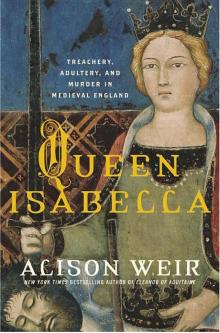 Queen Isabella: Treachery, Adultery, and Murder in Medieval England
Queen Isabella: Treachery, Adultery, and Murder in Medieval England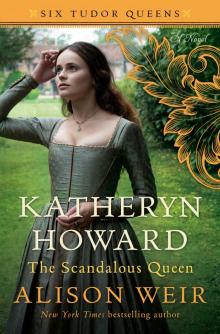 Katheryn Howard, the Scandalous Queen
Katheryn Howard, the Scandalous Queen Arthur- Prince of the Roses
Arthur- Prince of the Roses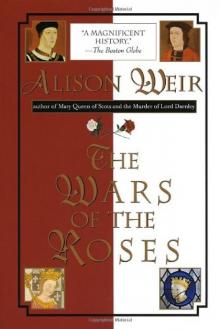 The Wars of the Roses
The Wars of the Roses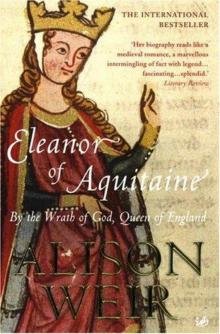 Eleanor of Aquitaine: By the Wrath of God, Queen of England
Eleanor of Aquitaine: By the Wrath of God, Queen of England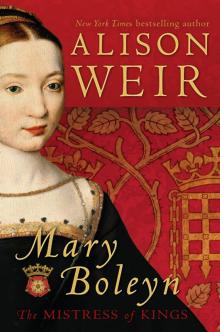 Mary Boleyn: The Great and Infamous Whore
Mary Boleyn: The Great and Infamous Whore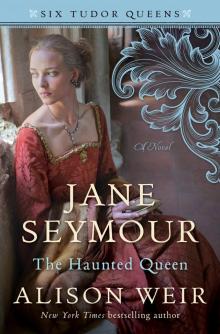 Jane Seymour: The Haunted Queen
Jane Seymour: The Haunted Queen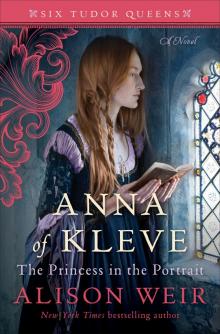 Anna of Kleve, the Princess in the Portrait
Anna of Kleve, the Princess in the Portrait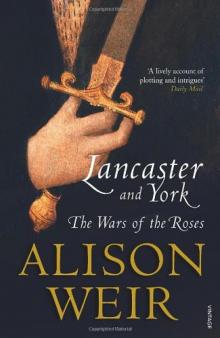 Lancaster and York: The Wars of the Roses
Lancaster and York: The Wars of the Roses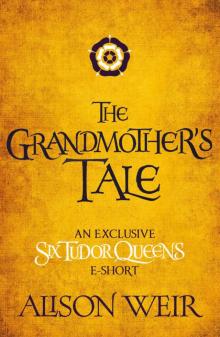 The Grandmother's Tale
The Grandmother's Tale The Princess of Scotland (Six Tudor Queens #5.5)
The Princess of Scotland (Six Tudor Queens #5.5)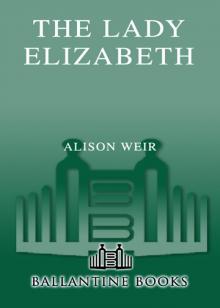 The Lady Elizabeth
The Lady Elizabeth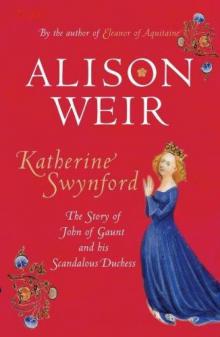 Katherine Swynford: The Story of John of Gaunt and His Scandalous Duchess
Katherine Swynford: The Story of John of Gaunt and His Scandalous Duchess The Curse of the Hungerfords
The Curse of the Hungerfords The Lost Tudor Princess: The Life of Lady Margaret Douglas
The Lost Tudor Princess: The Life of Lady Margaret Douglas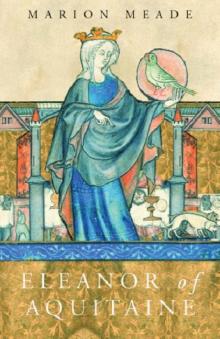 Eleanor of Aquitaine
Eleanor of Aquitaine Mistress of the Monarchy
Mistress of the Monarchy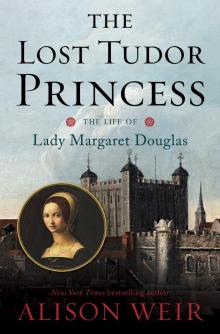 The Lost Tudor Princess
The Lost Tudor Princess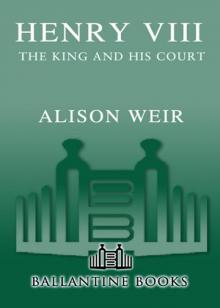 Henry VIII
Henry VIII Anne Boleyn, a King's Obsession
Anne Boleyn, a King's Obsession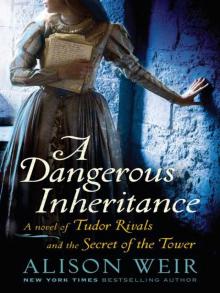 A Dangerous Inheritance: A Novel of Tudor Rivals and the Secret of the Tower
A Dangerous Inheritance: A Novel of Tudor Rivals and the Secret of the Tower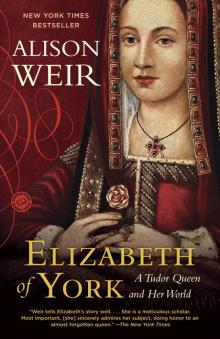 Elizabeth of York
Elizabeth of York Katherine of Aragon, the True Queen
Katherine of Aragon, the True Queen Katherine Swynford
Katherine Swynford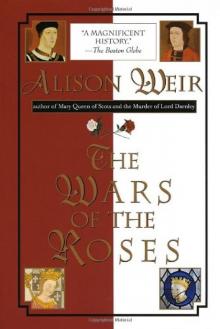 Wars of the Roses
Wars of the Roses Queens of the Conquest
Queens of the Conquest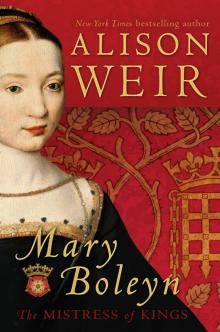 Mary Boleyn
Mary Boleyn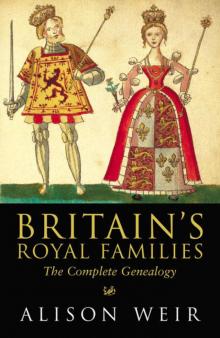 Britain's Royal Families
Britain's Royal Families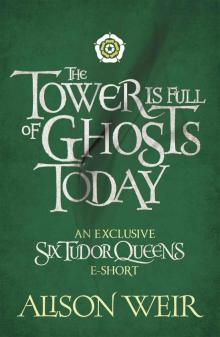 The Tower Is Full of Ghosts Today
The Tower Is Full of Ghosts Today Life of Elizabeth I
Life of Elizabeth I Anne Boleyn A King's Obssession
Anne Boleyn A King's Obssession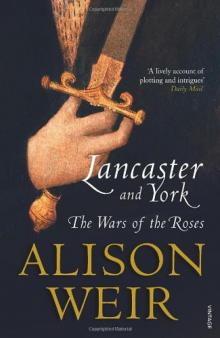 Lancaster and York
Lancaster and York Jane Seymour, the Haunted Queen
Jane Seymour, the Haunted Queen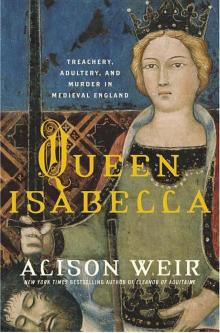 Queen Isabella
Queen Isabella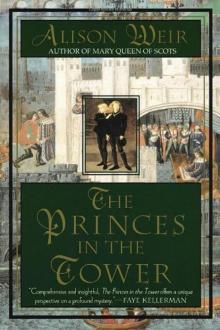 The princes in the tower
The princes in the tower